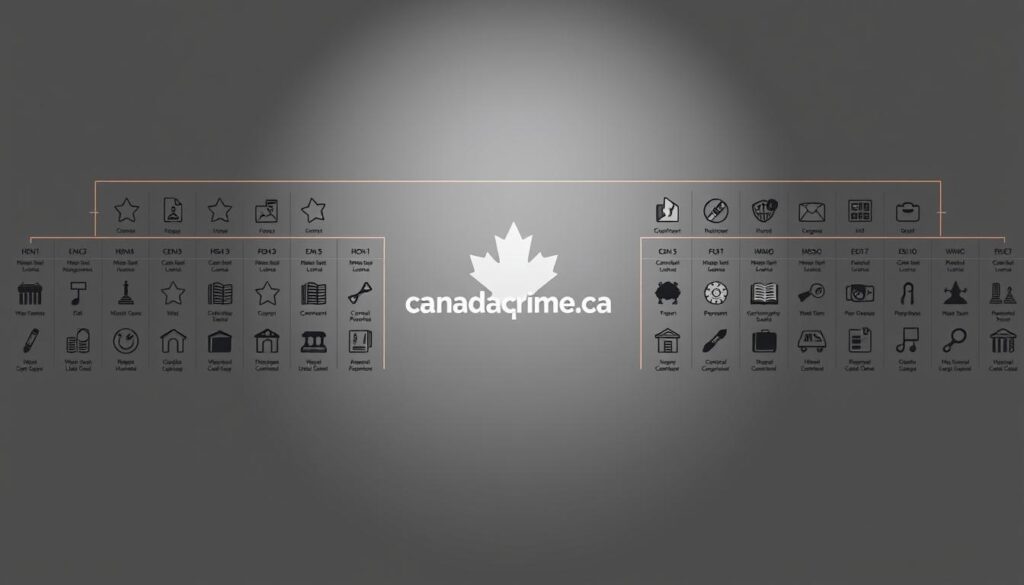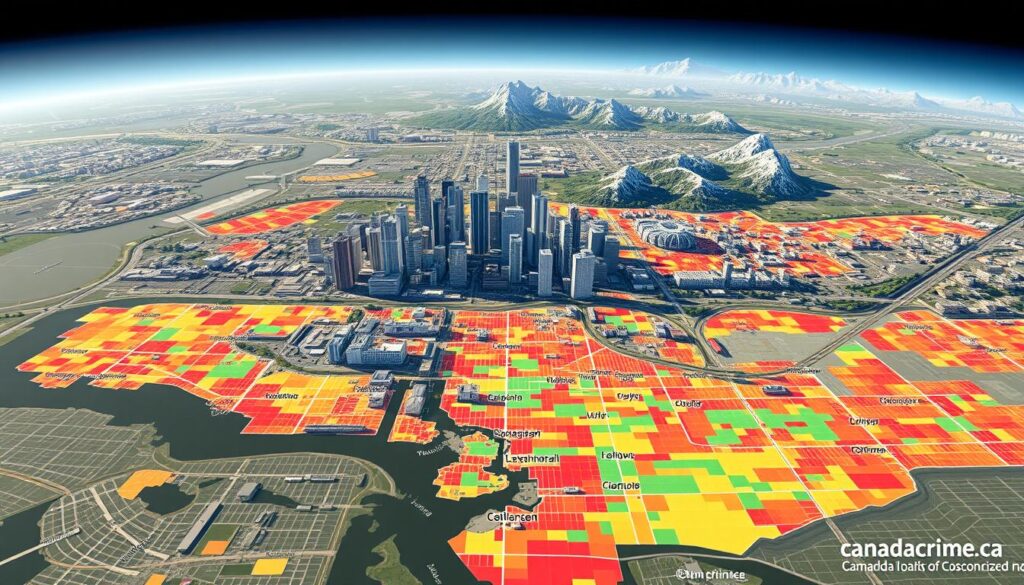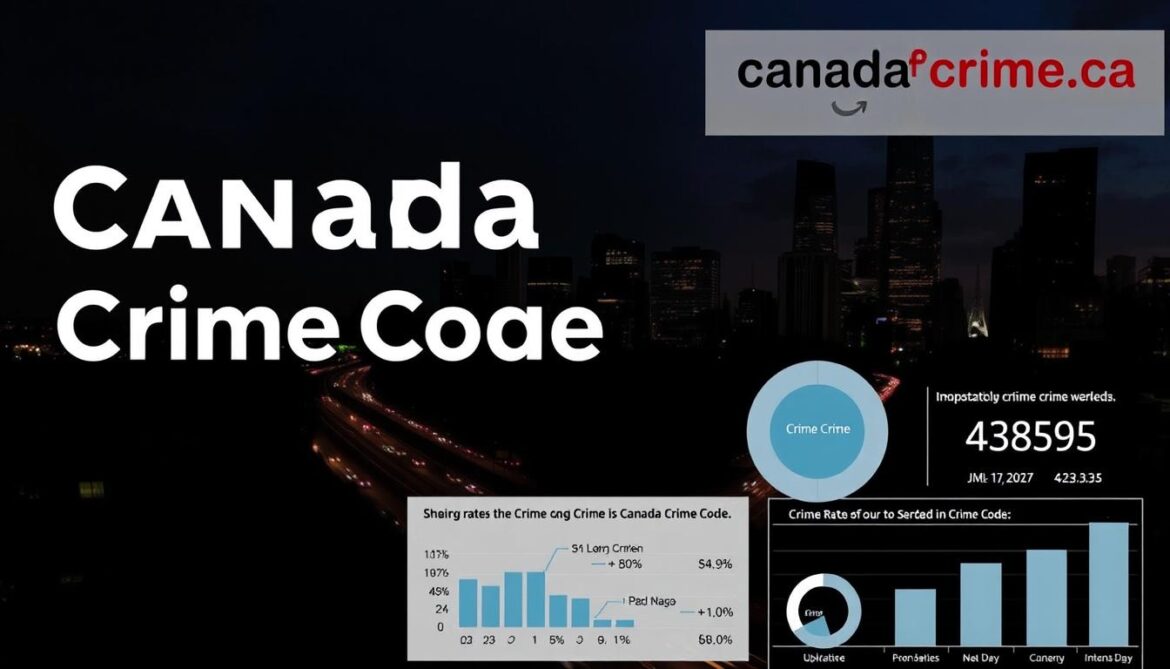Canada’s cities are often regarded as safe havens, but the reality of crime statistics paints a more nuanced picture. According to the Vancouver Police Department, the city’s crime rate stands at 8.62 per 1000 residents, a figure that underscores the importance of understanding the broader context of crime in Canada.
The classification and reporting of crime are governed by the country’s criminal code, which provides a framework for analyzing statistics and data on criminal activity. Official reports from law enforcement agencies are crucial in this regard, although they can be delayed due to quality control processes.
Understanding safety and crime rates requires a dive into the available data and information from police reports. This guide will explore the intricacies of Canada’s crime code and statistical reporting, providing insights into the trends and patterns that shape the country’s crime landscape.
Understanding Vancouver’s Crime Landscape
Understanding the nuances of Vancouver’s crime landscape is crucial for residents, policymakers, and law enforcement. Vancouver’s crime rate is a pressing concern, with a mix of violent and non-violent crime affecting the city.

Current Crime Trends in Vancouver
Vancouver’s crime trends are characterized by a combination of factors, including addiction, drugs, and homelessness, particularly in areas like the Downtown Eastside. The city’s crime rate stands at 8.62 per 1000 residents, according to the Vancouver Police Department (VPD). The Crime Severity Index (CSI) data indicates that Vancouver ranks 9th among the most dangerous cities in Canada.
The city’s unique challenges contribute significantly to its overall crime statistics. Despite these challenges, Vancouver maintains many safe neighborhoods and continues to be a desirable place to live.
Vancouver’s Position Among Canadian Cities
When compared to other major Canadian cities, Vancouver has a higher Crime Severity Index than Toronto (56.7), Montreal (72), and Ottawa (50.2). British Columbia, as a province, ranks in the middle among Canadian provinces with a CSI of 92.9. Vancouver’s crime rates are influenced by its socioeconomic conditions and the presence of areas with high crime concentrations.
The city’s crime landscape is complex, with various factors contributing to its overall crime rates. Understanding these factors is essential for developing effective crime prevention strategies.
The Canadian Criminal Code Framework
Understanding the Canadian Criminal Code is essential for grasping how crime is classified and reported across the country. The Criminal Code is a comprehensive legal framework that outlines various crimes and their corresponding classifications, serving as the backbone for crime reporting and statistics in Canada.
Structure and Key Components of the Criminal Code
The Canadian Criminal Code is structured to categorize crimes into different types, providing a systematic approach to understanding criminal activity. It includes a range of offences, from summary conviction offences to indictable offences, each with its own set of criteria and consequences. The Code is designed to be comprehensive, covering a wide array of criminal activities and ensuring that crimes are properly classified and reported.
Key components of the Criminal Code include the classification of crimes, the definition of criminal acts, and the specification of penalties for various offences. For instance, crimes are categorized based on their severity, with more serious crimes being classified as indictable offences. This categorization is crucial for determining the appropriate legal proceedings and penalties.
How Crimes Are Classified and Reported in Canada
In Canada, crimes are reported using two primary methods: the “most serious offence method” and the “all violations method.” The most serious offence method counts only the most serious offense in an incident, while the all violations method counts each violation separately. As noted by Statistics Canada, the Uniform Crime Reporting (UCR) survey scoring rules generally use the most serious offence method, whereas local police departments like the Vancouver Police Department’s GeoDASH system may use the all violations method. For more information on crime rates and statistics, visit Canada Crime Rates.
| Reporting Method | Description | Used By |
|---|---|---|
| Most Serious Offence Method | Counts only the most serious offense in an incident | Statistics Canada (UCR) |
| All Violations Method | Counts each violation separately | Vancouver Police Department (GeoDASH) |
Understanding these reporting methodologies is crucial when interpreting crime statistics, as differences in classification systems can significantly impact reported crime rates. Official crime statistics can be delayed due to quality control processes, which verify and categorize reports according to standardized definitions.

Vancouver Crime Rate Analysis
Analyzing the crime rate in Vancouver provides valuable insights into the city’s safety and security landscape. This analysis is crucial for understanding the trends and patterns of criminal activity in the city.
Crime Severity Index (CSI) Explained
The Crime Severity Index (CSI) is a statistical measure used by law enforcement agencies in Canada to track crime trends. It takes into account both the volume and severity of crimes reported to the police. The CSI provides a more comprehensive picture of crime than simple crime rates, as it weights different types of crimes according to their seriousness. For instance, violent crimes are given more weight than property crimes. This allows for a more nuanced understanding of crime trends in Vancouver.
Violent Crime Statistics
Violent crime statistics in Vancouver show a complex picture. According to recent data, there has been a fluctuation in violent crime rates over the past few years. The city experiences various types of violent crimes, including assault, robbery, and homicide. Understanding these statistics is essential for developing effective crime prevention strategies. The data indicates that some neighborhoods are more prone to violent crimes than others.

Property Crime Patterns
Property crime patterns in Vancouver vary significantly across different neighborhoods. The Vancouver Police Department’s GeoDASH system allows residents to track property crimes in their areas, providing valuable information on crime trends. Common property crimes include break and enter, theft from vehicles, vehicle theft, and bicycle theft. The data shows that areas like the downtown core, Commercial Drive, and neighborhoods surrounding SkyTrain stations tend to have higher rates of property crime. Understanding these patterns can help in implementing targeted prevention strategies.
| Crime Type | Downtown Core | Commercial Drive | SkyTrain Stations |
|---|---|---|---|
| Break and Enter | High | Moderate | High |
| Theft from Vehicles | High | Moderate | High |
| Vehicle Theft | Moderate | Low | Moderate |
| Bicycle Theft | High | Low | High |
Geographic Distribution of Crime in Vancouver
The distribution of crime in Vancouver varies greatly across different neighborhoods. While some areas experience higher rates of certain crimes, others remain relatively safe. The Vancouver Police Department’s crime statistics provide valuable insights into these geographical disparities.

Downtown Peninsula Crime Trends
The downtown peninsula and Downtown Eastside are known to have higher rates of certain crimes. Factors such as high population density, proximity to transit hubs, and the presence of commercial areas contribute to these trends. For instance, the concentration of people and businesses in these areas can sometimes lead to increased opportunities for criminal activity.
Some of the specific crime trends in the downtown peninsula include:
- Higher rates of property crimes, such as theft and vandalism
- Increased incidents of violent crimes, including assaults
- A notable presence of street crime, particularly in areas with high foot traffic
Neighborhood Safety Comparisons
In contrast, neighborhoods like West Point Grey and Kerrisdale typically report lower crime rates. These areas often have characteristics that contribute to their relative safety, such as lower population density and strong community cohesion.
Key factors influencing neighborhood safety include:
- Population density and socioeconomic conditions
- Proximity to transit hubs and commercial areas
- The presence of community programs and neighborhood watch initiatives
Understanding these factors and how they impact crime rates in different neighborhoods can help inform more effective policing strategies and community-based prevention initiatives.
Crime Prevention Strategies and Resources
Ensuring public safety in Vancouver involves a combination of community engagement, policing strategies, and addressing underlying social issues. The Vancouver Police Department plays a crucial role in this effort through various crime prevention programs.
The VPD has established multiple initiatives, including Block Watch, Citizens’ Crime Watch, and the Crime Free Multi-Housing Program, designed to foster safer neighborhoods. Community policing centers throughout Vancouver provide residents with local resources and support tailored to neighborhood-specific challenges.
Provincial initiatives also play a significant role in addressing public safety concerns. Proposals for enhanced mental health and substance use treatment options reflect the complex relationship between these issues and criminal activity in urban centers. Both government officials and police leadership emphasize the importance of ensuring residents feel safe, particularly in downtown areas that have faced increased challenges following the pandemic.
Effective crime prevention requires a multi-faceted approach that combines law enforcement efforts, community engagement, and social services. By addressing underlying factors such as mental health issues, substance use disorders, and socioeconomic challenges, the city can work towards reducing crime and enhancing safety for all residents.
In conclusion, crime prevention in Vancouver is a collaborative effort that involves the police, communities, and government. By leveraging resources, strategies, and information available, the city can continue to improve public safety and address the challenges that come with urban crime.

